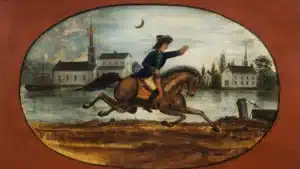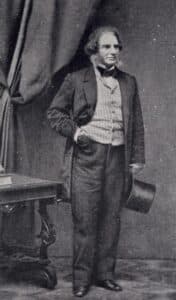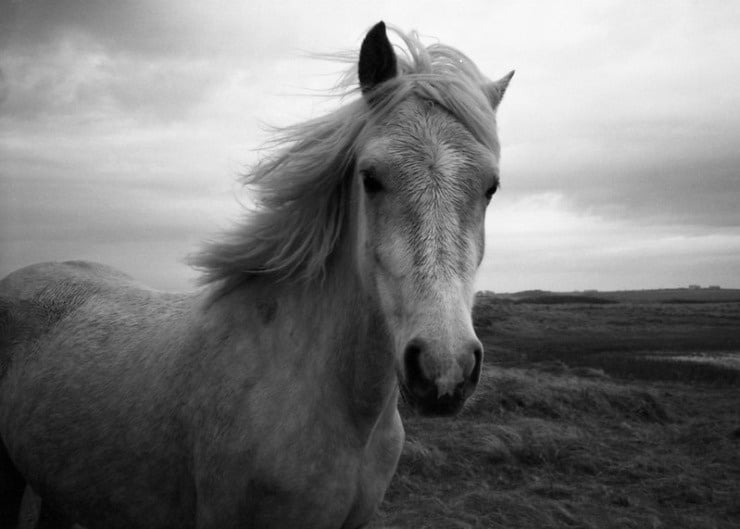With “Paul Revere’s Ride,” Longfellow created a national myth
It’s a tossup as to whether the most famous or best-known poem in America is Clement Moore”s “A Visit from St. Nicholas” (aka “Twas the Night Before Christmas”), first published in 1823, or Henry Wadsworth Longfellow’s “Paul Revere’s Ride,” (1860). My money is on “Paul Revere’s Ride.” Whole generations of schoolchildren, myself included, grew up reciting the lines that begin “Listen my children, and you shall hear…”.
Both poems are no longer taught in most of America’s public schools, but I know from my grandsons’ experience that they are taught (with great gusto) in many private schools, especially those offering a classical education. “Paul Revere’s Ride” commemorates one of the significant of the beginning of the American Revolution, a horseback ride at night to warn the cities of Lexington and Concord that British troops were coming.
That ride occurred 250 years ago tomorrow, the evening of April 18, 1775.
The poem is loosely, as in very loosely, based on historical fact. Paul Revere was one of three riders sounding the alarm, but he never made it to Concord. In fact, he was stopped and detained by British troops on the road. Contemporary critics have found all kinds of factual errors in the poem, making you wonder what Longfellow was up to when he wrote it. It certainly wasn’t to write a factual news report.

The 1861 Atlantic illustration for the poem
On April 5, 1860, Longfellow, the most famous poet in America at the time, went on a tour of Boston. He recorded this in his journal: ‘Go with (Charles) Sumner to Mr. Having, of the North End, who acts as our guide to the “Little Britian” of Boston. Go to the Copp’s Hill burial ground and see the tomb of Cotton Mather, his father and his son; then to the old North Church, which looks like a parish church in London. Climb the tower to the Chime of Bells, now the home of innumerable pigeons. From this tower were hung the lanterns as a signal that the British troops had left Boston for Concord.”
The idea for the poem started there. Longfellow went on to research the famous ride, and he researched it rather fully. He knew the facts, but it wasn’t a presentation of the facts he was after. Like he had done with The Song of Hiawatha and The Courtship of Miles Standish, Longfellow was creating a national legend, a mythos. He selectively used elements of the ride, enhancing some and discarding others, for poetic and dramatic effect.
It was an especially dire time for the United States. It was an election year, and one in which Abraham Lincoln would be victorious. The month in which “Paul Revere’s Ride” was published in the Boston Evening Transcript – December 1860 – was the month in which South Carolina seceded from the Union. In January of 1861, when the poem was also published in The Atlantic, five more Southern states seceded, eventually followed by five more. That was the social and political context of Longfellow’s poem, making it something of an appeal to the ideals of the country’s founding. (The poem would later be published in book form in 1863 as the landlord’s tale in Tales of a Wayside Inn.)
The conclusion to “Paul Revere’s Ride”:
So through the night rode Paul Revere;
And so through the night went his cry of alarm
To every Middlesex village and farm, —
A cry of defiance and not of fear,
A voice in the darkness, a knock at the door,
And a word that shall echo forevermore!
For, borne on the night-wind of the Past,
Through all our history, to the last,
In the hour of darkness and peril and need,
The people will waken and listen to hear
The hurrying hoof-beats of that steed,
And the midnight message of Paul Revere.

Longfellow in 1860
Clearly, the great political events of late 1860 were what Longfellow had in mind when he wrote those lines “Though our history, to the last, / In the hour of darkness and peril and need…”.
I reread the poem during the writing and research for my Civil War historical novel, Brookhaven. And then I saw the movie I Heard the Bells, a fictionalized account of the story of Longfellow during the Civil War. I reread Cross of Snow: A Life of Henry Wadsworth Longfellow by Nicholas Basbanes, and that led me to the idea of using Longfellow’s poems in Brookhaven. A main character, Sam McClure, discovers Longfellow as a young child, and the poems become both a talisman and personal trademark. I would eventually read all of Longfellow’s poetry, using editions from 1898, 1944, and 2000. It’s possible that Sam, living in Mississippi, would have known “Paul Revere’s Ride” when it was published in The Atlantic in early 1861; the war didn’t start until April. But he had absorbed Longfellow’s earlier poetry.
Longfellow’s appeal to the ideal of the founding of the United States is a “quiet” theme in Brookhaven. Like our own time, Americans in 1860 were often at each other’s throats. Sectionalism was rampant like our red and blue divisions today. The characters of Sam McClure and his family have to navigate those divisions and are not always successful. But as the spirit of “Paul Revere’s Ride” attests, we are indeed one country, and we will work our way through this.
Related:
Drive Thru History with Dave Stotts – the Old North Church and Paul Revere’s ride
Musical Narrative / Paul Revere’s Ride – Woodmere Art Museum
Ben Franklin’s World: Paul Revere’s Ride Through History
Photo by Richard P J Lambert, Creative Commons, via Flickr. Post by Glynn Young.
How to Read a Poem uses images like the mouse, the hive, the switch (from the Billy Collins poem)—to guide readers into new ways of understanding poems. Anthology included.
“I require all our incoming poetry students—in the MFA I direct—to buy and read this book.”
—Jeanetta Calhoun Mish
- Happy Thanksgiving, from Tweetspeak Poetry (and Henry Wadsworth Longfellow) - November 27, 2025
- Finding Poetry in an Anselm Kiefer Art Exhibition - November 25, 2025
- Poets and Poems: Autumn Williams and “Clouds on the Ground” - November 20, 2025


Leave a Reply